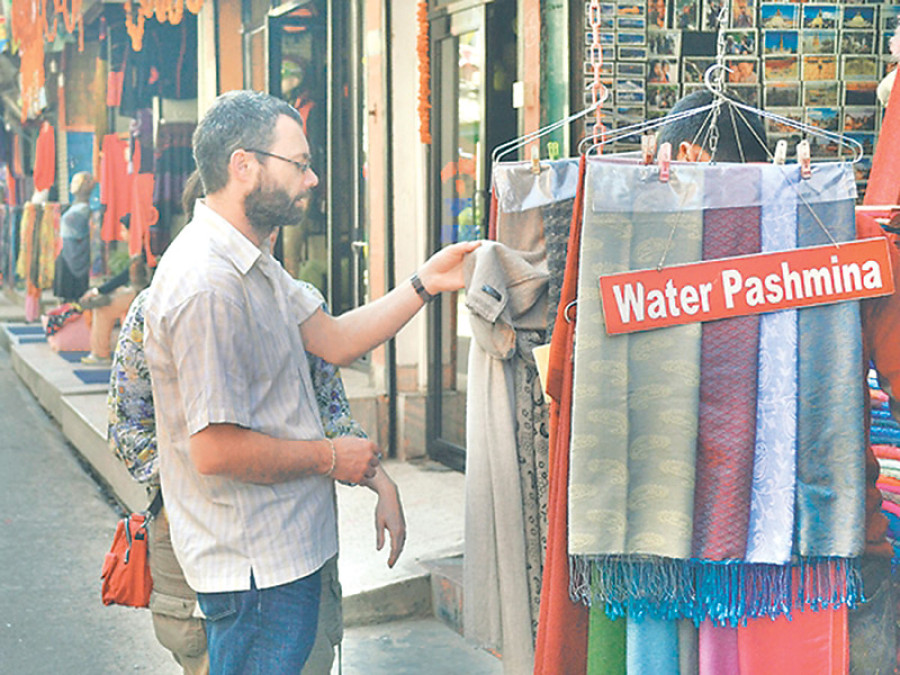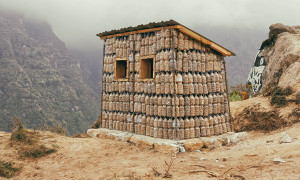Money
Pashmina exports down 6.8 percent due to lower demand in Europe
Exports of pashmina products, one of the major trading items of the country, dropped by 6.8 percent in the first nine months of the fiscal year 2016-17 with the fall in demand for the goods in Europe.
Aagat Ruchi Sapkota
Exports of pashmina products, one of the major trading items of the country, dropped by 6.8 percent in the first nine months of the fiscal year 2016-17 with the fall in demand for the goods in Europe.
Nepal earned Rs1.89 billion by selling pashmina products in overseas market in between mid-July and mid-April, shows the latest report of the Nepal Rastra Bank. In the same period last fiscal year, the country’s earnings from exports of the products stood at Rs2.04 billion, marking a year-on-year growth of 20.7 percent.
Nepal’s exports of pashmina products grew in the last fiscal year despite facing India-imposed trade blockade—which halted cross-border supply of almost everything—largely because almost 99 percent of the consignments of goods are shipped to the overseas markets via airplanes, according to Vijay Dugar, vice-president of the Nepal Pashmina Industries Association (NPIA).
Many had expected exports to further go up in the current fiscal year due to normalisation in the supply situation. But that did not happen because of lower demand in European markets.
“While the demand is still growing in France, other markets in the European Union have not completely recovered from the recent economic crisis, which has reduced demand for goods like pashmina,” Dugar said. “However, exports to the US and other markets have remained satisfactory.”
Nepal exports shawls, muffler, sweaters and caps made of pashmina, among others, to various countries in Asia, the Americas and Europe. Of these products, demand for medium-size pashmina shawls, which cost around $30-$40, is high, according to Aaryan Kaphley, who works at a pashmina outlet in Thamel.
Pashmina products are Nepal’s third largest export item to third-countries after hand-knotted woollen carpets and readymade garments. Exports of these products reached the peak in the late 1990s and early 2000s, when demand for goods made of pashmina surged especially in Europe. But with the decline in quality, entry of replicas of Nepali pashmina products and inability to compete with products manufactured by China, Pakistan and India, their exports suffered.
To restore confidence of foreign customers in Nepal-made pashmina products, the country has recently started branding these goods under the trademark of Chyangra Pashmina. The trademark, introduced in 2011, is now registered in 41 countries.
The demand for Pashmina products is still pretty high around the world, according to the NPIA. And countries such as Pakistan and India are catering to this demand by producing goods at a relatively lower cost.
“Transportation and labour costs are quite high in Nepal. These factors make our products expensive in the international market,” NPIA President Durga Bikram Thapa said. “Also, our government does not have appropriate policies to boost exports of specific products, such as pashmina.”
The government has identified pashmina as one of the products with high export potential. This has led to the inclusion of the product in the Nepal Trade Integration Strategy, a five-year strategy aimed at diversifying exports of nine major goods and three major services.
“Although the strategy has to some extent helped enhance skills of workers employed in pashmina factories and improve production methods at cottage and small enterprises, these changes alone will not help Nepali pashmina products to compete abroad,” Thapa said, warning, “Inability to introduce sweeping reforms in the sector will cause pashmina exports to further decline.”




 13.12°C Kathmandu
13.12°C Kathmandu














